Choose The Right Boom Lift For Your Indoor & Outdoor Works

Introduction to Boom Lifts
Working at heights has always posed risks, but with boom lifts, we’ve managed to make this much safer and more efficient. However, these machines must be handled with extreme caution, as safety lapses can lead to dangerous situations. Whether you’re working in an indoor warehouse or on a construction site outdoors, knowing how to safely operate and use boom lifts is essential for preventing accidents.
What Is a Boom Lift?
A boom lift is an aerial work platform (AWP) used to lift workers to higher locations. It consists of a platform attached to a hydraulic arm that can extend vertically or horizontally to reach areas that would otherwise be difficult to access.
Different Types of Boom Lifts
Boom lifts come in various types, each suited for different tasks and environments:
- Articulating Boom Lifts: Known for their flexible arms, which can bend and navigate around obstacles.
- Telescopic Boom Lifts: These have a straight arm and can extend much farther, making them ideal for jobs that require significant height.
- Electric Boom Lifts: Commonly used indoors due to their quieter operation and no emissions.
- Rough Terrain Boom Lifts: These are designed for outdoor use, with enhanced stability and rugged tires for uneven surfaces.
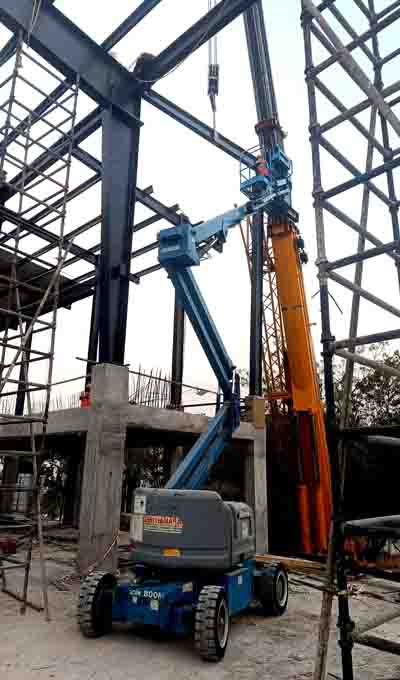
Importance of Boom Lift Safety
Safety is paramount when working with boom lifts. Due to the heights involved and the potential hazards, strict safety protocols must be followed to avoid falls, tip-overs, or equipment malfunctions. Whether indoors or outdoors, ensuring the operator and ground crew are aware of all safety guidelines is essential for a safe working environment.
Indoor Boom Lift Applications
Boom lifts are widely used indoors, particularly in environments such as:
- Warehouses
- Large retail spaces
- Manufacturing facilities
- Indoor construction projects
These settings often require the lift to navigate tight spaces, pass through narrow aisles, and access elevated storage or machinery. Electric boom lifts are commonly used indoors due to their compact size and emission-free operation.
Safety Guidelines for Indoor Usage
When operating a boom lift indoors, consider the following safety tips:
- Check Ceiling Height: Always verify that the boom lift will fit within the indoor ceiling height and that there is enough clearance for safe operation.
- Avoid Obstructions: Ensure that the path of the lift is free of hanging objects, beams, or electrical wiring.
- Ventilation Matters: Even with electric lifts, ensure proper ventilation if the lift is being operated for an extended period.
- Weight Limitations: Never overload the platform, as indoor lifts have specific load capacities.
Outdoor Boom Lift Applications
Outdoor boom lift use is common in:
- Construction sites
- Landscaping projects
- Telecommunications work
- Roadside repairs
Rough terrain lifts are often chosen for outdoor projects because they can handle uneven surfaces and reach great heights in more challenging environments.
Safety Guidelines for Outdoor Usage
Outdoor boom lift operations come with their own set of challenges. Here are some key safety tips:
- Assess the Ground Conditions: Ensure that the ground is stable and firm. Avoid operating on slopes, muddy ground, or loose gravel.
- Weather Awareness: Always be cautious of weather conditions. Wind, rain, and lightning can all pose serious hazards.
- Watch for Overhead Hazards: Power lines, trees, or construction materials can become obstacles during outdoor operations.
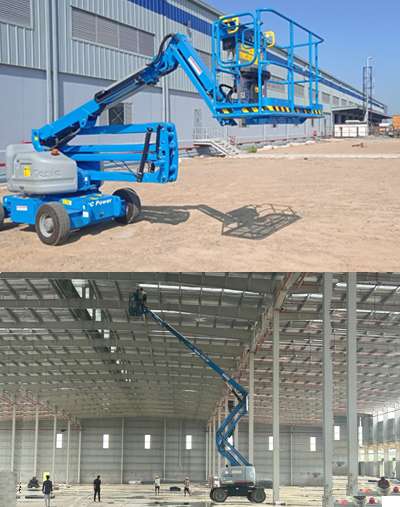
Common Hazards When Operating Boom Lifts
There are several hazards associated with both indoor and outdoor boom lift use:
- Falls from Heights: A lack of proper harnessing or guardrails can lead to falls.
- Tip-Overs: This occurs when the lift becomes unbalanced, often due to uneven ground or overloading.
- Crushing Hazards: Workers can be pinned between the lift and a stationary object like a wall or beam.
- Electrocution: Contact with power lines can be fatal if precautions are not taken.
Proper Training for Boom Lift Operators
Proper training is a non-negotiable requirement for anyone operating a boom lift. Training should include:
- Safe operating procedures
- Equipment inspection techniques
- Emergency response protocols
- Understanding the weight and height limitations
Choosing the Right Boom Lift for the Job
Selecting the right boom lift for the task at hand is crucial for both efficiency and safety. Factors to consider include:
- Height Requirements: How high does the platform need to reach?
- Weight Capacity: Will the lift handle the weight of both workers and equipment?
- Surface Conditions: Is the ground level and stable, or will you need a rough terrain model?
Weather Considerations for Outdoor Work
Outdoor work comes with the additional factor of unpredictable weather. High winds, in particular, are dangerous for boom lifts, especially when extended to full height. Wind speeds over 28 mph are typically considered unsafe for boom lift operations.
Height Restrictions and Safe Practices
When working at significant heights, always adhere to the following practices:
- Use Fall Protection: Ensure that workers are wearing proper harnesses attached to anchor points.
- Do Not Overreach: Workers should avoid leaning out of the platform, as this can destabilize the lift.
- Maintain Stability: Always operate the lift on level ground and avoid overloading it with tools or materials.
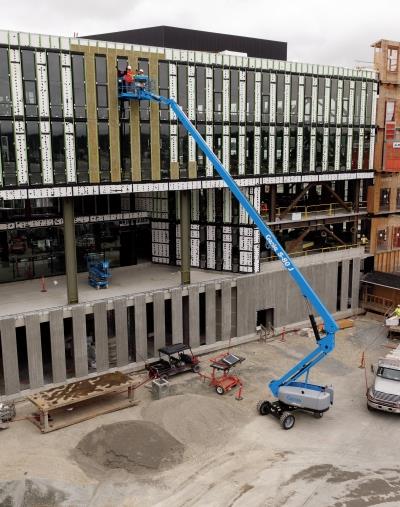
Routine Maintenance and Inspections
Routine inspections and maintenance are critical for the longevity and safety of boom lifts. This includes checking:
- Hydraulic Systems: Ensure the fluid levels are adequate and there are no leaks.
- Tires: Check for wear and tear, especially for rough terrain lifts.
- Safety Features: Ensure all emergency stop buttons, alarms, and safety mechanisms are functioning.
Conclusion and Final Safety Tips
Boom lifts are an invaluable tool for height work, both indoors and outdoors. However, their use comes with inherent risks. By following safety guidelines, selecting the right equipment, and ensuring proper training, workers can reduce these risks and complete tasks efficiently. Always prioritize safety, inspect equipment regularly, and stay aware of environmental factors like weather and ground conditions.


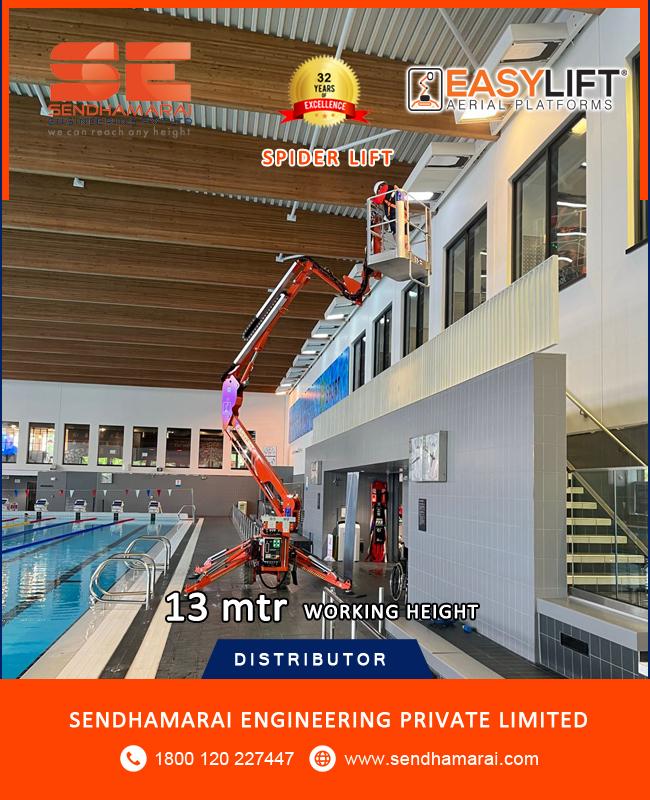
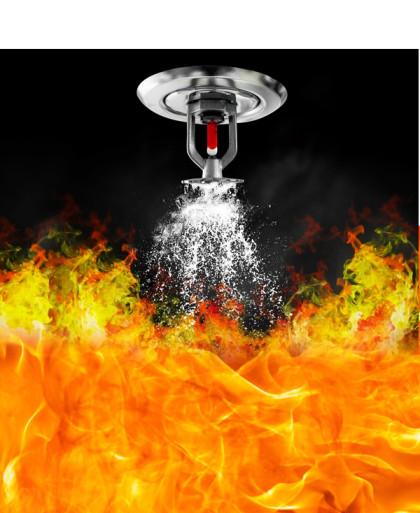

Comments